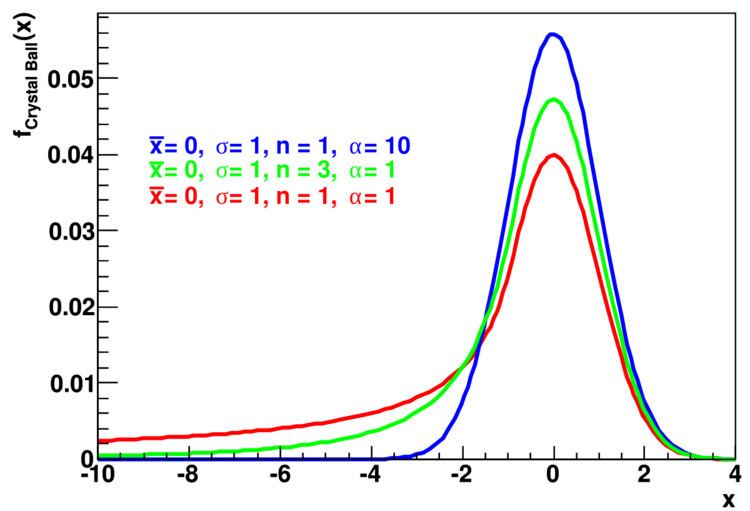The Crystal Ball function, named after the Crystal Ball Collaboration (hence the capitalized initial letters), is a probability density function commonly used to model various lossy processes in high-energy physics. It consists of a Gaussian core portion and a power-law low-end tail, below a certain threshold. The function itself and its first derivative are both continuous.
The Crystal Ball function is given by:
f ( x ; α , n , x ¯ , σ ) = N ⋅ { exp ( − ( x − x ¯ ) 2 2 σ 2 ) , for x − x ¯ σ > − α A ⋅ ( B − x − x ¯ σ ) − n , for x − x ¯ σ ⩽ − α where
A = ( n | α | ) n ⋅ exp ( − | α | 2 2 ) ,
B = n | α | − | α | ,
N = 1 σ ( C + D ) ,
C = n | α | ⋅ 1 n − 1 ⋅ exp ( − | α | 2 2 ) ,
D = π 2 ( 1 + erf ( | α | 2 ) ) .
N (Skwarnicki 1986) is a normalization factor and α , n , x ¯ and σ are parameters which are fitted with the data. erf is the error function.

